The stationary bike is a killer cardio machine for burning calories. But just how effective? In this guide, we’ll look at how many calories the stationary bike burns, along with some effective strategies to enhance your calorie-burning efforts.
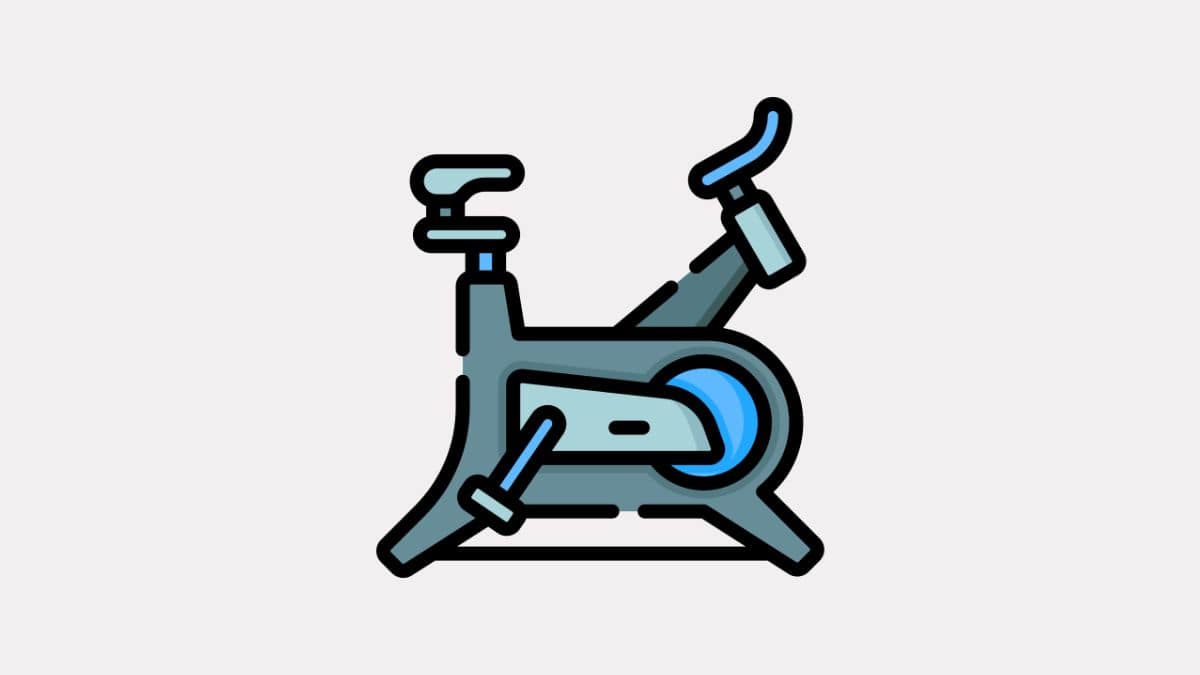
The stationary bike isn’t only one of the best cardio machines for losing weight; it’s also one of the most comfortable, user-friendly machines in the gym.
On the stationary bike, you’re doing all your work from a seated position, so there’s far less strain on your joints and greater engagement of your leg muscles.
Over the course of a 30, 45, or even 60-minute ride, you can burn a lot of calories and see real weight loss.
“But exactly how many calories does a stationary bike burn?” you might be wondering.
That’s what we’ll find out here!
Below, we’ll look at how many calories you can burn on a stationary bike (Hint: It’s all about your speed and terrain!) and compare how that stacks up against other gym machines.
And for the sake of maximizing every workout, we’ll offer tips that will help you burn more calories on the stationary bike.
Let’s jump right in and get our calorie-burnin’ on.
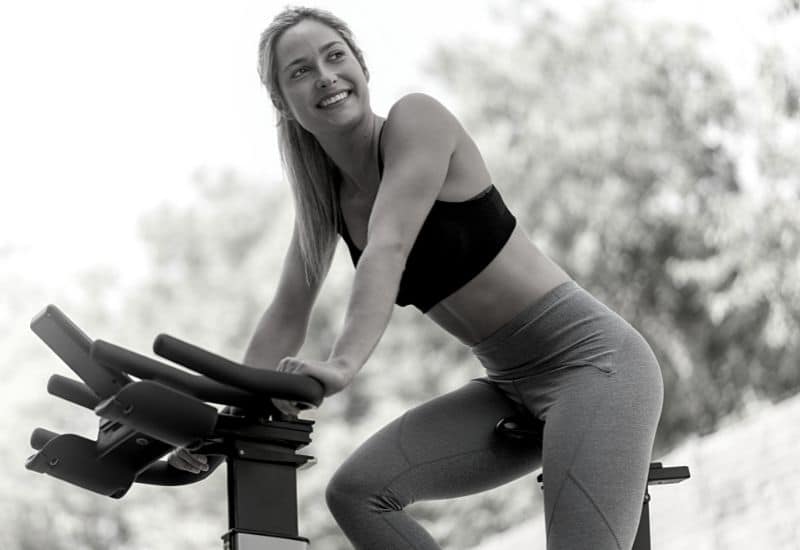
Calories Burned on the Stationary Bike
“Calories burned” is usually considered one of the most important metrics in any given workout. Calories are a unit of energy, so the more calories you burn, the more “units of energy” you are using.
And where do you think that energy comes from? It comes from one of two sources:
1) The food you eat
2) The fat you’ve previously stored
If you can burn enough calories to burn through the food you’ve eaten in the hours leading up to your workout, your body has no choice but to tap into stored fats. The result: fat-burning and weight loss!
So how many calories does a stationary bike burn?
According to data collected by Harvard Medical School:
- A 125-pound person will burn 210 calories in 30 minutes of a “moderate” stationary bike workout.
- A 155-pound person will burn 252 calories in 30 minutes of a “moderate” stationary bike workout.
- A 185-pound person will burn 294 calories in 30 minutes of a “moderate” stationary bike workout.
If you push the pace a bit harder, really put some effort into cycling at a more vigorous pace and tackling more advanced terrain types:
- A 125-pound person will burn 315 calories in 30 minutes of a “vigorous” stationary bike workout.
- A 155-pound person will burn 378 calories in 30 minutes of a “vigorous” stationary bike workout.
- A 185-pound person will burn 441 calories in 30 minutes of a “vigorous” stationary bike workout.
Not too bad, right? Those are some pretty good results, all things considered.
The stationary bike can offer some impressive calorie-burning compared to many other workouts and other cardio machines, as you’ll see below.
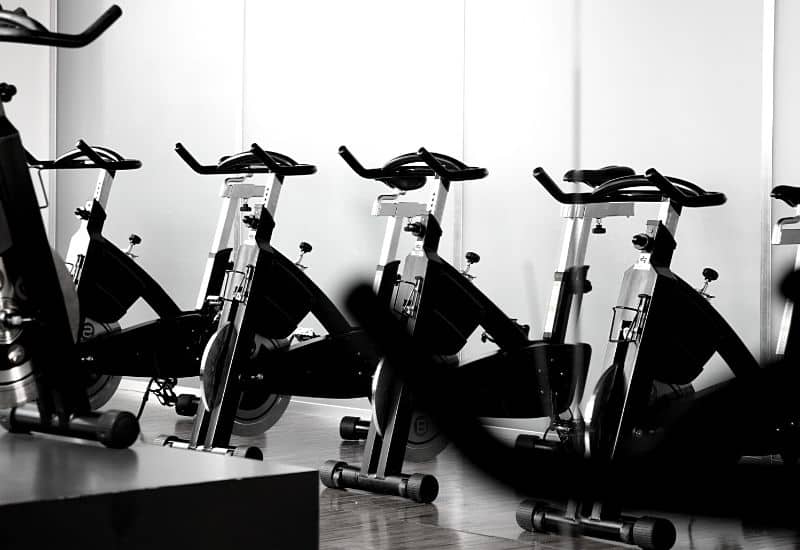
How Do Stationary Bikes Compare to Other Cardio Machines for Burning Calories?
Based on the same data Harvard Medical School collected:
- A 125-pound person will burn 180 calories in 30 minutes of a “general” workout on the stair climber. (Less than a stationary bike.)
- A 155-pound person will burn 252 calories in 30 minutes of a “moderate” rowing machine workout. (The same as the stationary bike.)
- A 185-pound person will burn 378 calories in 30 minutes of a general elliptical machine workout. (More than a stationary bike.)
Compare that to a workout on the treadmill:
- A 125-pound person will burn 180 calories in 30 minutes of jogging on a treadmill. (Less than a stationary bike.)
- A 155-pound person will burn 288 calories in 30 minutes of a 5 MPH running pace. (Slightly more than the stationary bike at “moderate”, but less than at “vigorous”.)
- A 185-pound person will burn 450 calories in 30 minutes of a 7.5 MPH fast run/slow sprint pace. (Significantly more than the stationary bike at “moderate”, but roughly the same as at “moderate”.)
What this means is that the stationary bike will be nearly as effective as treadmill running, both in your moderate and vigorous workouts.
Compared to full-body workouts (such as rowing or the elliptical), the stationary bike can burn roughly the same number of calories, too.
How to Burn More Calories on the Stationary Bike
If your goal is to make the most of the time you spend on the stationary bike and really see results (in terms of muscular endurance and calories burned), I’ve got a few tips that will help you to take every workout to the next level:
Crank up the difficulty
As you saw above, pushing the intensity (or difficulty) of the workout is the key to burning more calories. All you’ve got to do, really, is just cycle harder.
The average “beginner cyclist” will pedal at around 8 to 12 MPH, while intermediate-level cyclists will pick up the pace to around 12 to 16 MPH. The more advanced you get, the more ground you’ll cover because you can cycle harder—your muscles and cardiovascular system will be able to sustain the effort without fatigue.
See also: How to Use a Stationary Bike for Weight Loss (Tips and Weight Loss Workouts)
Take a look at your current “average” cycling pace and distance. See where you’re at, your speed, your revolutions per minute (RPMs), and calories burned per workout.
Once you know what your current workout performance is, try pushing yourself to cycle just a little bit harder.
Even just a single MPH faster or a few more RPMs can make a huge difference in calories burned throughout a 30, 45, or 60-minute workout.
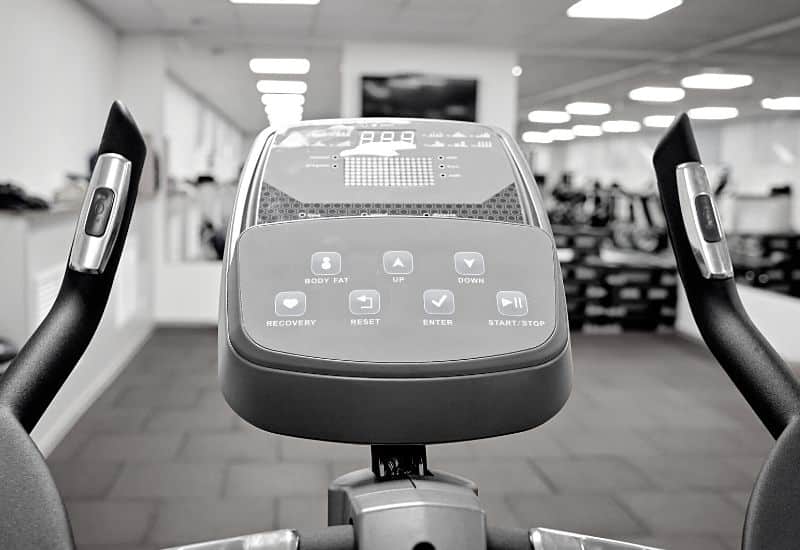
Cycle Longer
Speed isn’t the only way to burn more calories—you can use time and distance, too.
Let’s do some quick napkin math: if a 185-pound person burns 441 calories in 30 minutes of a “vigorous” stationary bike workout but gasses out after those 30 minutes, they’ll end up burning far less than they would in 60 minutes of a “moderate” stationary bike workout (294 x 2 = 588 calories).
And this is why low-intensity, steady state workouts are often so popular for weight loss!
Not only do these workouts put your body in the aerobic state it needs to be activate stored fats, but it also utilizes less energy per minute, so you burn through your body’s available energy supply more slowly.
See also: Recumbent Bike vs. Upright Bike: Pros, Cons, and Which is Best for Your Goals?
And because they are less intense, the recovery period is shorter, leading to more training sessions on the bike, resulting in even more calorie burn.
Used correctly—at the correct intensity and sufficient length of time—the stationary bike easily becomes one of the cardio machines for burning calories.
Tackle Hills
Most types of stationary bikes come with the ability to “add incline.” Essentially, you can tighten the magnets around the metal flywheel, which makes it more difficult to pedal, simulating the struggle of cycling up a hill.
Uphill cycling has a few killer benefits.
First, it’ll push your glutes and hamstrings harder, rather than focusing chiefly on your quads.
Second, it’ll demand more of your cardiovascular system, building that necessary cardiovascular endurance in your heart and lungs.
Third and most important of all, it’ll burn more calories per minute than flat-road cycling.
Try to incorporate regular hill climbs into your stationary bike workouts—every 2 minutes, 5 minutes, or 10 minutes, really at whatever intervals suit you best.
You’ll need the “recovery” of flat-road cycling, but pushing your muscles and cardiovascular system by tackling inclined terrain is a crucial component of getting fitter on the stationary bike.
As a bonus, it’ll max out calorie-burning and help you torch serious fat.
Change it Up
If you cycle the exact same pre-programmed workout every time you sit down to work, your body will adapt to it. After all, that’s what it’s designed to do.
Our bodies are complex mechanisms that adjust to energy expenditure and consumption so we work as efficiently as possible—a.k.a. burning as little energy as possible while still performing the tasks.
The key, then, is to keep changing things up.
That way, our bodies can’t adapt to any specific form of work (climbing a hill of a specific incline for a specific duration, maintaining a specific speed, etc.).
All they can do is just expand our fitness overall in an attempt to be prepared for anything.
Some ways to spice up your stationary bike workouts include:
- Change the frequency of your hills
- Change the incline of the hills
- Change pedaling speed throughout the workout
- Change the duration of cycling “sprints”
- Shorten or lengthen recovery periods
Variety is the secret to being an all-around fitter athlete in everything you do!
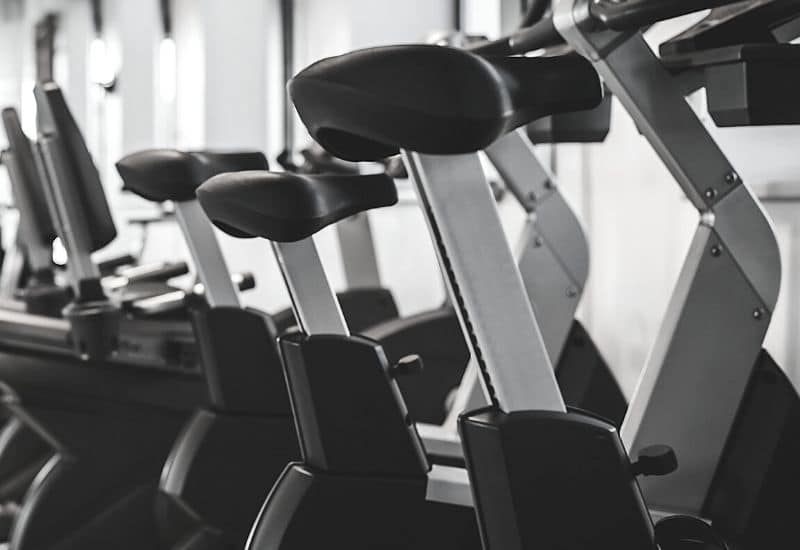
Track Your Performance
This is an absolutely crucial element of your weight loss and fitness efforts.
When you cycle without any real monitoring or tracking, you may push yourself hard every workout, but you won’t really know what “pushing yourself hard” really means. That’s because we feel different every single day.
Some days we are tired and lethargic, and exercising feels like we are moving through cement. Other days, we shoot out of bed like some main-lined Red Bull into our veins while we were sleeping.
This means that the RPE (rate of perceived exertion) can feel drastically different from workout to workout.
The body is a wonderful and complex machine comprised of countless internal mechanisms that all have to work together in harmony to produce energy and propel our skeletal system along. Some days those mechanisms hum along in unison, while other days one or more are “off” or functioning at less than optimum capacity.
Tracking with objective metrics ensures that no matter what kind of day we’re having—a tired or energized one—we have a “baseline” that tells us what our standard workout is.
No feelings involved, just cold, hard data.
Whether it’s distance, watts, calories burned, average heart rate—choose the metric that matters to you and use it a tool for staying focused on the days when you feel like a bag of wet gym socks.
Ride Regularly
Fun fact: the only way you’ll get better at cycling is to cycle regularly. The best way to push your pace and cover more ground in less time and tackle those hills with less difficulty is to keep investing the time and effort doing exactly that.
The human cardiovascular and skeletomuscular systems will adapt to all forms of exercise, but the only way to become fitter and better-able to perform a specific form of exercise is to train that specific form of exercise regularly.
That’s why runners primarily run, cyclists primarily cycle, and rowers primarily row.
Some other forms of cardio will be good for your cardiovascular system, but to get better at cycling and to burn more calories on the stationary bike, you’ve got to put your butt on that bike seat and pedal away!
You can maintain frequency on the bike by varying the intensity and programming for your workouts.
For example, on Mondays, bang out a 40-minute interval workout on the bike. Tuesday, a more leisurely steady-state 30-minute bike where your heart rate doesn’t exceed 135 BPM. Wednesday, crank up the intensity again.
Stationary bikes are one of my favorite cardio machines because you can do recovery workouts on them thanks to the minimal resistance in the lower settings.
Give Your Body Time to Rest
One of the great benefits of stationary bikes is that they’re much gentler on your joints than high-impact exercise (like running or jump training/plyo). That means there is less microscopic damage caused by your workouts, so less recovery time is needed.
However, at least some recovery time is necessary! Rest times will vary by athlete and trainee. 24 hours is the minimum between more strenuous sessions on the bike, but 48 hours is better for most people, especially those just getting started with burning calories on the exercise bike.
The longer and harder you cycle, the more recovery time you’ll need.
The Bottom Line
The stationary bike is an absolute monster of a cardio machine for lighting a ton of calories on fire.
Done correctly, it can be as effective as any running, rowing, or elliptical workout—all while being much gentler on your joints!
The tips above will help you to take every cycling workout to the next level, pushing the pace, cycling longer, taking on more challenging terrain, and infusing your training with variety enough to keep your body guessing and improve your overall fitness.
The end result is that you will burn a heaping pile of calories on the stationary bike.
Put in the time and effort, and you’ll see the results on the bike and the scale soon enough!
Calories Burned on Other Cardio Machines
Cardio machines are the best way to do those longer calorie-torching cardio workouts in the gym.
We’ve written about cardio machines extensively, including details on how many calories each one burns, in the guides below:
How Many Calories Do You Burn on an Elliptical? (and How to Burn More). Wondering how many calories the elliptical trainer burns? Here’s how much calorie burning you are doing, how the elliptical compares to other machines in the gym, and tips for how to burn even more calories on an elliptical.
How Many Calories Do You Burn on the Rowing Machine? (and How to Burn More). Wondering how many calories you are burning on the rowing machine? Here’s a look at how effective the rower is for burning calories and how to burn even more.
How Many Calories Do You Burn on the Treadmill? (and How to Burn More). Wondering how many calories you are burning on the treadmill? Read on to find out how many you are burning and some proven tips for maximizing calorie burn on the treadmill.